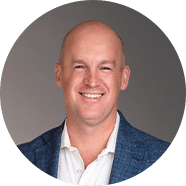Menu
April 4th, 2016
Written By: Chris Amos - Ann Arbor Headshot Photographer
Let's talk about headshots. Specifically, let's talk about business headshots. There's a little bit more to a great business headshot than you might think. In this article, I’ll introduce you to a whole new way of looking at business headshots while also filling you in on some information that will help you look your best as a professional in your next headshot session.
What Does Your Headshot Say About You?
First, let’s get a good understanding of how you’re going to use your headshot, and what you want it to say about you. You’re going to be posting your headshot on your website, your LinkedIn page, and maybe a couple of other places. This picture of you may be the first time many of your clients see what you look like. Combined with your website, your credentials, testimonials, etc., it's going to make an impression.
Your headshot communicates subtleties about your personality, confidence, and character. It’s not just about looking good, it’s about looking the part. Figuring out the right look for yourself can be a challenge. With my headshot clients, I always aim for confidence with approachability. This seems to be a good look for any business headshot. But we can always tweak your look from there, with more confidence, or more approachability.
Maybe you’re a litigator and you need to look like you’re tough in the courtroom, but still seem approachable to your clients. Or you’re a family practice attorney, and you want to look friendly and professional. Consider whether you want to look younger, older, more experienced, trustworthy, charismatic, or tough in your photo. It’s a good idea to think about how you want to be perceived before your session and discuss this with your photographer. This will also give you some guidance when picking the best photo(s) to use on your website.
Professional Photographer vs. Taking the Photo Yourself
A lot of responsibility falls on the photographer, of course, and there are obvious merits to getting a well-done professional photo over taking the picture yourself. A professional photographer who knows what he or she is doing will make you look your best with flattering lighting, a keen eye for details, and a bit of charisma or humor to get you to loosen up and relax.
In addition to finding the right photographer for the job, there are a few things that you can learn and even practice in front of the mirror before your photo session.
For a minute, let’s assume when you get in front of a camera you’re like just about everyone. That is, you’re somewhat tense, nervous, self-conscious, and bit frightened. Now a good photographer will get you to relax and be yourself. But let’s not assume anything, and let’s instead give you some control over the situation.
To help mitigate some of this anxiety I’m going to tell you that there’s a pretty basic formula to getting a great headshot. And if you have a face, and muscles in your face, you can do it. We don’t all look like Brad Pitt, but even Brad looked like a deer in headlights in his 1987 headshot. He eventually had to learn how to look good in front of the camera. This is stuff celebrities do.
Pose
Let’s start with the easy part, the pose. There are three basic options for a pose. Right shoulder towards the camera, left shoulder towards the camera, and your shoulders squared off towards the camera. Standing for your headshot usually sets you up for good posture right off the bat. If you have a “good side” for any particular reason, mention this to the photographer. Note that a lot of blemishes can be easily retouched in post processing.
Facial Expression
Now for the important part: your expression. The goal is to look relaxed, confidant, and personable. You probably already look the part every day and you may realize it or you may not. So how do you look relaxed in front of a camera?
There are a few really simple things you can do that will make a big difference in front of the camera.
First, let’s focus on your jawline. Bringing your forehead straight out towards the camera does two things: The first has to do with body language; it makes you appear more engaged and present with in the photo. If you think about it, when you’re in an interesting conversation with someone, you tend to lean in a little bit. The second has to do with the jawline itself. Extending your head straight out toward the camera (notice that I said straight, your chin and forehead should be even and on a single plane) stretches the skin around your jawline, further defining your face and creating a nice shadow around your jaw. If you have a double chin, this will either completely take care of it or make it much less noticeable.
Getting the eyes right is probably the most important part of a headshot. If you get in front of a camera and immediately look like a deer in headlights, try squinting slightly by raising your lower eyelids. This helps you achieve a more focused and natural gaze. Note, for example, how your eyes would be when you’re outside and it’s a little bit bright. Or pretend you’re focusing intently on something. Duplicate that in front of the camera for a confidant, focused gaze.
Many people have an “eye difference” where one eye is more open than the other when smiling or posing for a photo. Personally, I have a major eye difference when I smile in photos. The solution to this is just to squint your larger eye slightly so as to even them out. Work with the photographer on this as it can make a big difference in getting your eyes to look natural and focused.
The final element that is always tricky is knowing what to do with your mouth. For more serious photos, I'd recommend just trying to relax and maybe even leave a little bit of space between the lips. Big smiles are usually a little bit too much for a professional headshot, so if you want to smile in your photo to appear more approachable, I'd recommend just a slight smile, almost a smirk or confidant grin. Think of the Mona Lisa. She is smiling in a manner that says, "I know something you don't know." Her expression has depth; it sparks interest in the viewer.
Think about what you're trying to say with your headshot while you're doing your session. It may help put your mind in a better place, which will not only distract from all the stresses of getting your picture made, but also convey to the camera exactly what you intended.
Now that I've spilled all of the secrets, hopefully you have a better understanding of some of the nuances that are behind a great professional headshot. Pay attention to these concepts in magazines and TV shows or movies; notice how celebrities pose and hold their expressions on the red carpet and on screen. And maybe, when nobody is looking, practice a few of these tricks in the mirror. Good luck!
Categories: Blog




